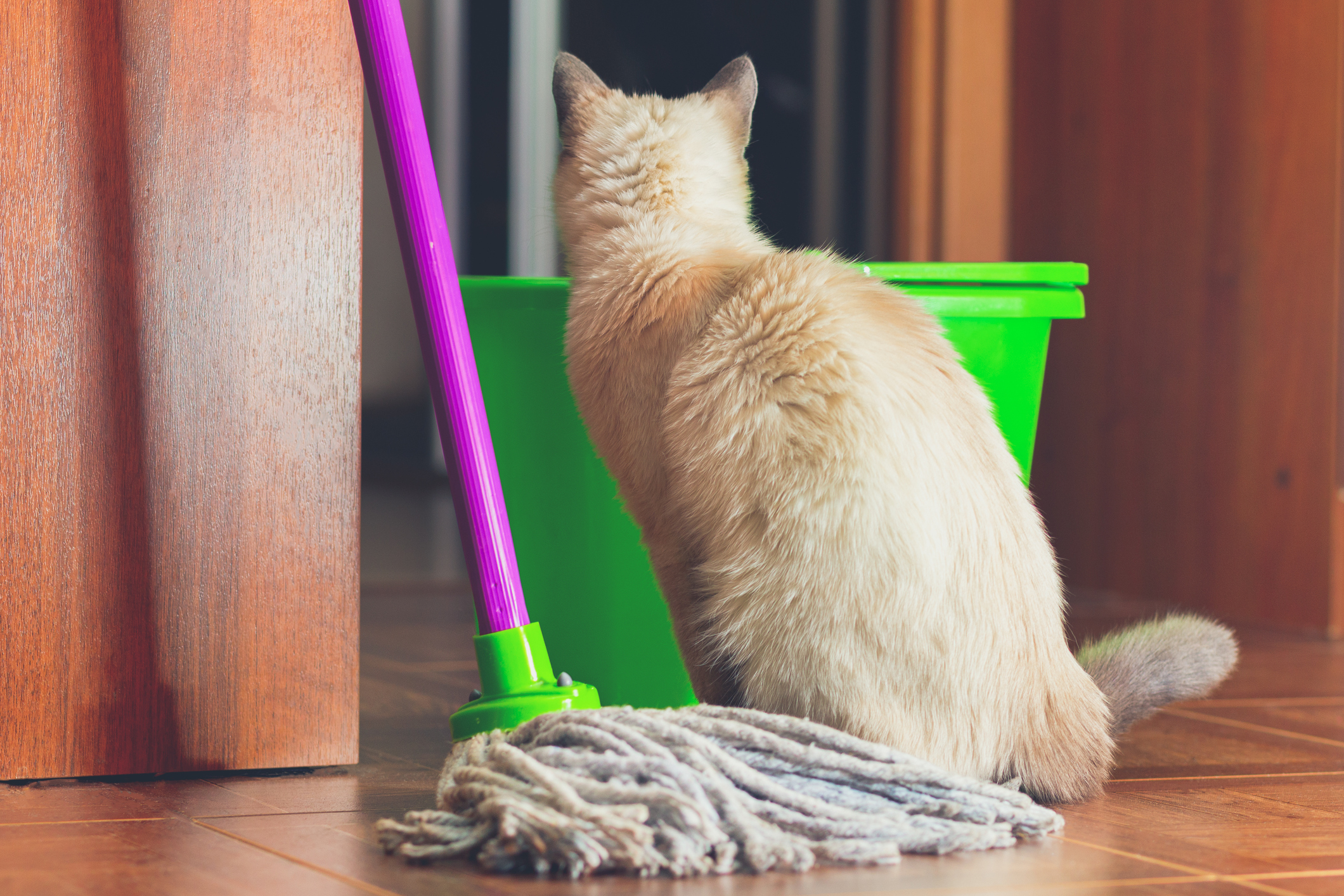
This is How Spring Cleaning Puts Your Pet in Danger
It’s officially springtime, and the nicer weather is encouraging people everywhere to open the windows, grab the cleaning supplies and do a bit of spring cleaning to freshen up their homes. Although spring cleaning can be a refreshing chore, for pet owners, it can also be the source of danger for cats and dogs.
If you’re planning to do some spring cleaning in the coming weeks, be mindful of these few cleaning-related dangers to prevent something bad from happening to your pet!
Cleaning chemicals and poisoning

One of the most common and completely preventable problems pet owners encounter during spring cleaning is pet poisoning due to cleaning chemicals. Most people keep their cleaning supplies locked away in a cabinet or closet, but these chemicals may be more accessible when you’re deep cleaning your counters and floors.
A number of chemical cleaners are dangerous to pets. Bleach, detergent soaps, acidic cleaners, essential oils and much more can be extremely toxic to dogs and cats. Some may cause irritation or injury immediately upon contact, such as acids burning the paws. Others are potent enough to cause poisoning through contact and grooming—for example, if your dog walks on your newly-cleaned floor and then licks their paws that have cleaning chemicals on them.
Almost all chemicals are dangerous to leave lying open around the home, because your dog or cat could easily knock over the bottle and drink the chemical. Toxic poisoning in pets can cause a range of symptoms, from vomiting and diarrhea to lethargy, difficulty breathing, collapsing, seizures and even death.
The best course of action is to use pet-safe cleaners throughout your home. However, pet-safe alternatives aren’t always available. If you’re using a chemical that is dangerous to cats and dogs, keep the pet out of the room until the cleaning solution has dried. Be sure to tighten all bottle caps and store the cleaning supplies out of reach of your pets after you’re done using them. Also be sure to clean up and store any rags, sponges and other tools you used.
Allergic reactions
Another concern during spring cleaning is the potential for your pet to experience an allergic reaction or asthma attack. Many pets develop allergies to household cleaners that are triggered upon contact with the substance. Some pets may have reactions by inhaling fumes and particles from the cleaners, as well.
Other potential sources of allergies are dust and mold. These common allergens are often kicked up as homeowners clean, making them more prevalent in the air your pet breathes.
While you’re cleaning, keep an eye on your pet and any symptoms of allergies they might display, such as watery eyes, runny nose, sneezing, itchiness and inflamed and bumpy skin. If the symptoms began once you started cleaning, it’s likely that your pet is allergic to a cleaner you used or dust and mold.
Choking hazards
If you’re cleaning out your cabinets, drawers and toy boxes, be wary of items you place on the floor or another area your pet has access to. Small knick-knacks and loose items like string, fabric and rubber bands could pose a threat to an inquisitive pet.
One of the major concerns here is choking. Should your dog or cat attempt to eat a small toy or household item, it could get lodged in their throat. Another possibility is the formation of an intestinal blockage if the item is too large to pass through the bowels.
In general, avoid leaving small items around the home while cleaning or keep your pet in another room while you declutter. After you’re done, run the vacuum cleaner to pick up any tiny objects you might have missed.
Pest prevention and traps

Spring cleaning is often an excuse for homeowners to begin implementing pest prevention inside and outside their homes. However, you must be wary about using chemicals and pest traps where they could affect pets.
Indoor and outdoor pest control chemicals can be toxic for pets, so it’s important to research pet-safe alternatives and follow the directions exactly. Avoid using spring-loaded or chemical traps for pests like rodents and ants. Many pets are attracted to these traps the same ways pests are and can be poisoned or injured if they interact with them.
If you’re implementing pest control into your home, speak with your provider about pet-safe options and stay away from toxic chemicals.
Supervision improves safety
Although spring cleaning can be a time-consuming task, it’s very important to keep a close eye on your pets throughout the process. It’s far too easy for cats and dogs to find their way into a bottle of cleaner or start gnawing on a misplaced toy. Close supervision or containment are your best defenses against potential spring-cleaning hazards, so you can clean your home and keep your pet safe!


